C Major Entertainment
422 products
-
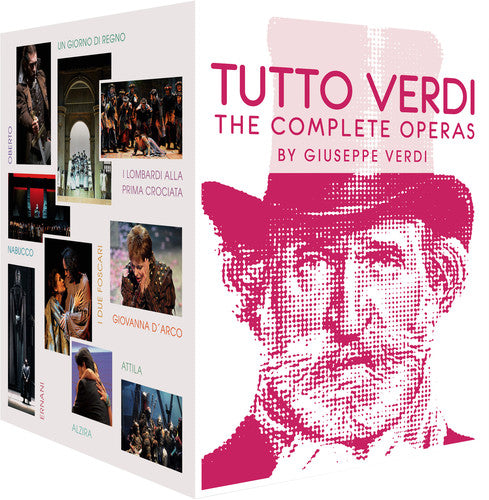
-
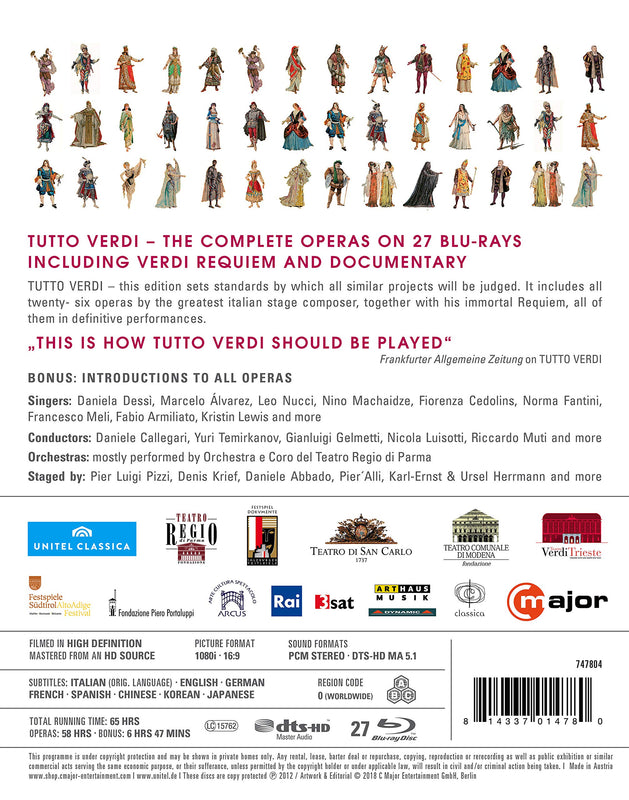
-
![Tutto Verdi: The Complete Operas / Various [Blu-ray]](//arkivmusic.com/cdn/shop/files/3828558.jpg?v=1749389863&width=800) {# optional: put hover video/second image here positioned absolute; inset:0 #}
C Major Entertainment
{# optional: put hover video/second image here positioned absolute; inset:0 #}
C Major EntertainmentTutto Verdi: The Complete Operas / Various [Blu-ray]
Tutto Verdi- this edition sets standards by which all similar projects will be judged. It includes all twenty-six operas by the greatest...
$283.99October 26, 2018 -
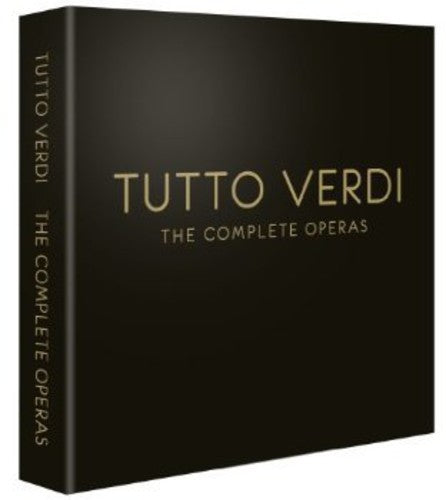
-
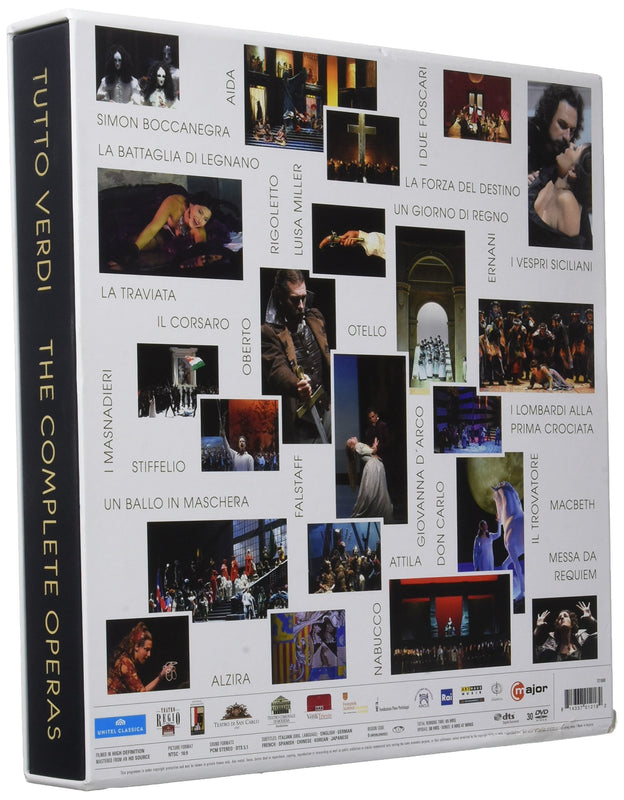
-
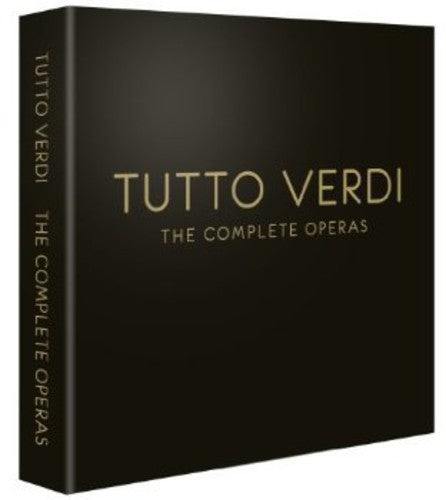 {# optional: put hover video/second image here positioned absolute; inset:0 #}
On SaleC Major Entertainment
{# optional: put hover video/second image here positioned absolute; inset:0 #}
On SaleC Major EntertainmentTutto Verdi - The Complete Operas
Also available on Blu-ray On the occasion of the 200th birthday of Giuseppe Verdi, the Teatro Regio di Parma and Unitel ClassiCa...
December 18, 2012$605.99$302.84 -
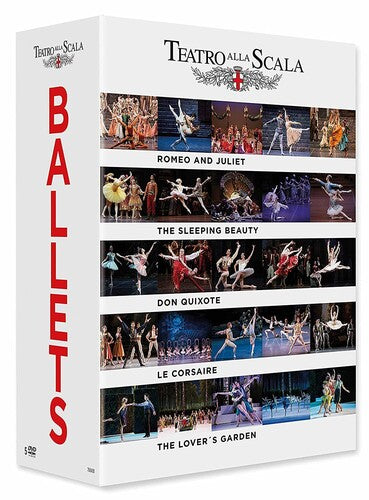
-
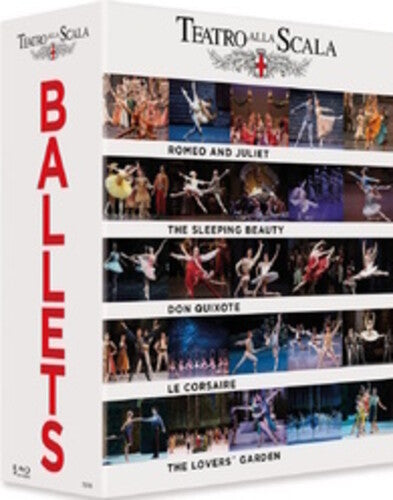
-
![Teatro alla Scala Ballets / Ballet Company and Orchestra of Teatro alla Scala [DVD]](//arkivmusic.com/cdn/shop/files/4018062-2764543.jpg?v=1760448499&width=800) {# optional: put hover video/second image here positioned absolute; inset:0 #}
On SaleC Major Entertainment
{# optional: put hover video/second image here positioned absolute; inset:0 #}
On SaleC Major EntertainmentTeatro alla Scala Ballets / Ballet Company and Orchestra of Teatro alla Scala [DVD]
The present release showcases five outstanding ballets from the legendary Teatro alla Scala. First is Romeo and Juliet. The stars of this...
November 19, 2021$92.99$46.47 -
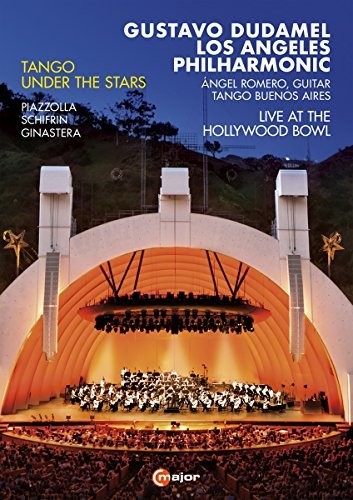
-
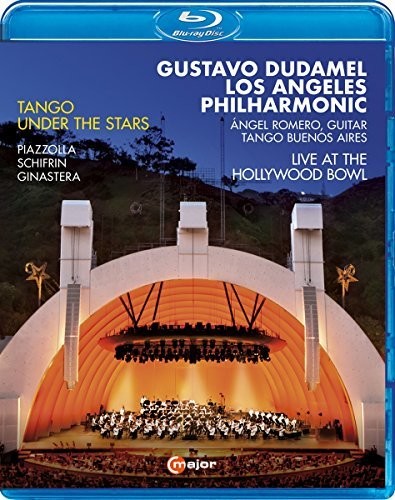
-
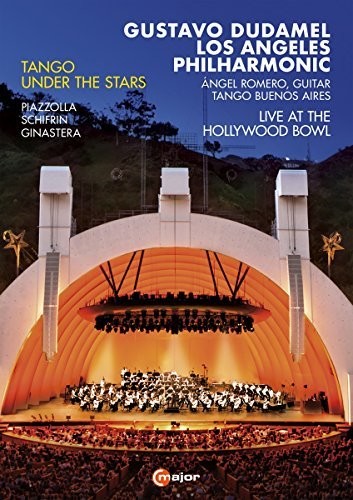 {# optional: put hover video/second image here positioned absolute; inset:0 #}
On SaleC Major Entertainment
{# optional: put hover video/second image here positioned absolute; inset:0 #}
On SaleC Major EntertainmentTango Under the Stars
Also available on Blu-ray Gustavo Dudamel and the Los Angeles Philharmonic accent the colors, rhythms and passion of music by leading composers...
March 24, 2017$32.99$16.49 -
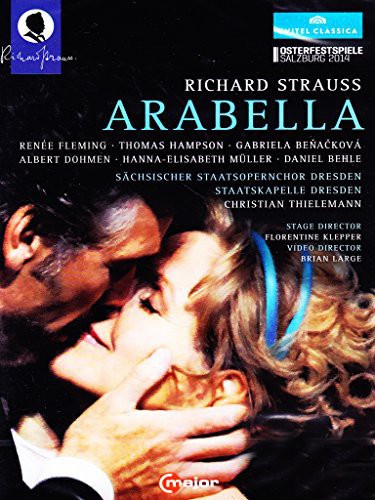
-
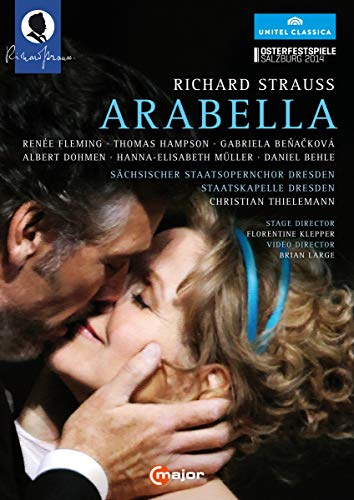
-
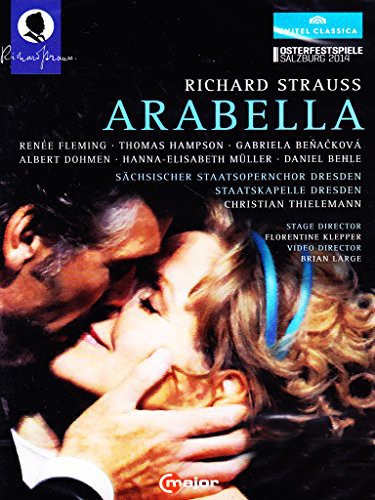 {# optional: put hover video/second image here positioned absolute; inset:0 #}
On SaleC Major Entertainment
{# optional: put hover video/second image here positioned absolute; inset:0 #}
On SaleC Major EntertainmentStrauss: Arabella / Fleming, Hampson, Thielemann
Also available on Blu-ray 2014 marks a year of celebration recognizing the 150th birthday year of the German late-Romantic orchestral, operatic and...
September 30, 2014$42.99$21.48 -
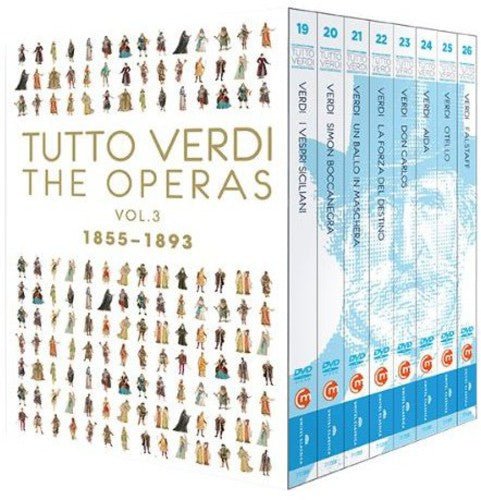
-
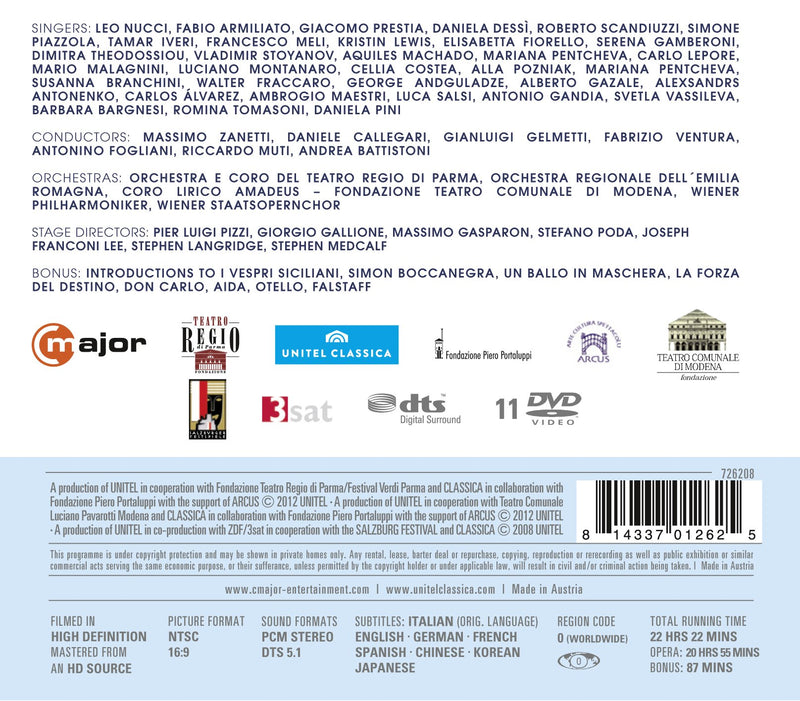
-
![Tutto Verdi Operas Vol 3, 1855-1893 [11-DVDs]](//arkivmusic.com/cdn/shop/files/2335711.jpg?v=1749259330&width=800) {# optional: put hover video/second image here positioned absolute; inset:0 #}
C Major Entertainment
{# optional: put hover video/second image here positioned absolute; inset:0 #}
C Major EntertainmentTutto Verdi Operas Vol 3, 1855-1893 [11-DVDs]
Also available on Blu-ray “The Tutto Verdi series, in its goal of being complete, makes it possible to not only hear but...
$187.99October 29, 2013 -

-

-
![The Original Three Tenors - In Concert, Rome 1990 / Carreras, Domingo, Pavarotti, Mehta [Blu-ray]](//arkivmusic.com/cdn/shop/files/3995441-2731042.jpg?v=1761772264&width=800) {# optional: put hover video/second image here positioned absolute; inset:0 #}
On SaleC Major Entertainment
{# optional: put hover video/second image here positioned absolute; inset:0 #}
On SaleC Major EntertainmentThe Original Three Tenors - In Concert, Rome 1990 / Carreras, Domingo, Pavarotti, Mehta [Blu-ray]
This very special release includes the legendary concert of the Original Three Tenors - José Carreras, Plácido Domingo and Luciano Pavarotti, conducted...
September 24, 2021$35.99$17.99 -
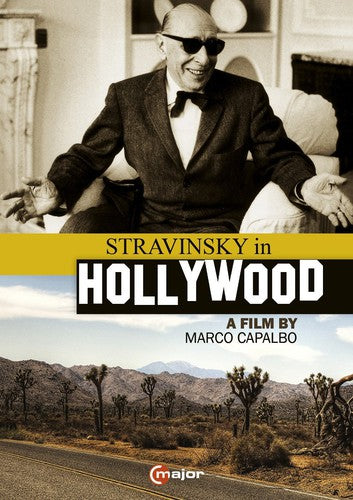
-
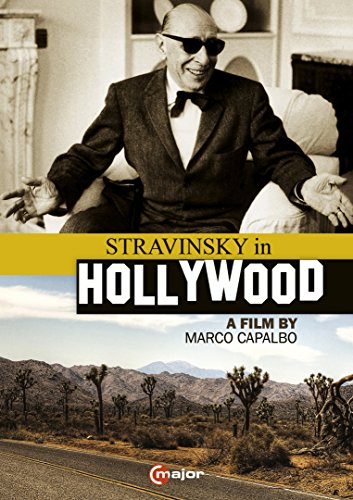
-
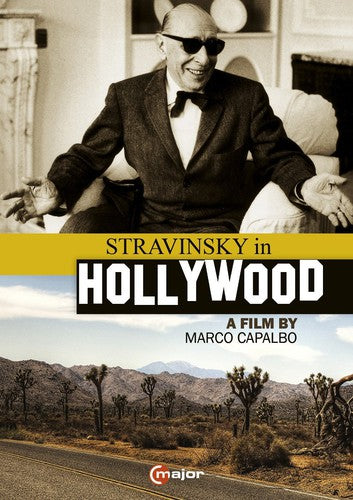 {# optional: put hover video/second image here positioned absolute; inset:0 #}
On SaleC Major Entertainment
{# optional: put hover video/second image here positioned absolute; inset:0 #}
On SaleC Major EntertainmentStravinsky in Hollywood
Also available on Blu-ray Stravinsky in Hollywood, a film by Michael Capalbo, tells the story of an "old school" European artist knocking...
June 24, 2014$26.99$13.49 -
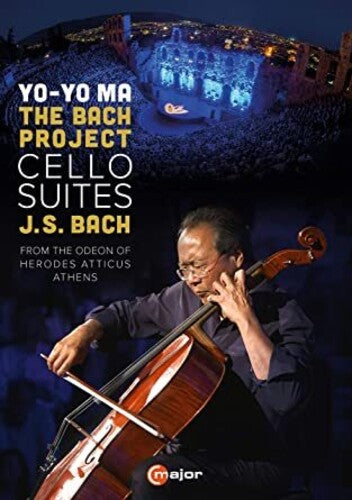
-
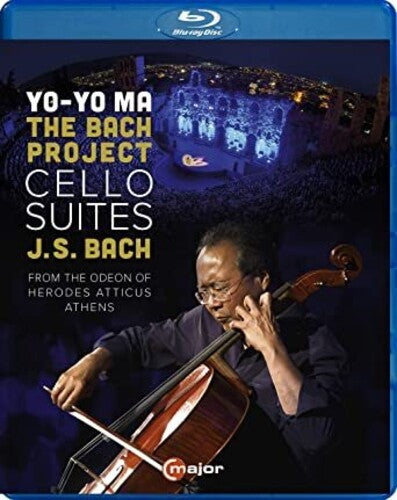
-
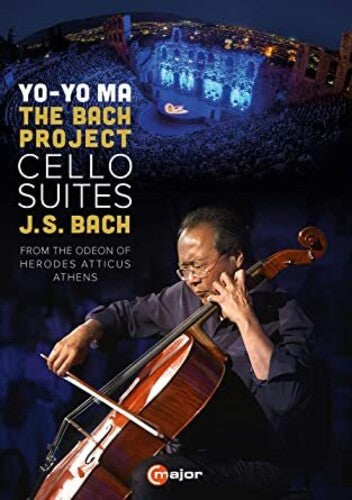 {# optional: put hover video/second image here positioned absolute; inset:0 #}
On SaleC Major Entertainment
{# optional: put hover video/second image here positioned absolute; inset:0 #}
On SaleC Major EntertainmentThe Bach Project: Cello Suites / Yo-Yo Ma
Also available on Blu-ray In 2018, Yo-Yo Ma began a two-year journey, setting out to perform Johann Sebastian Bach’s six suites for...
May 22, 2020$40.99$22.98 -
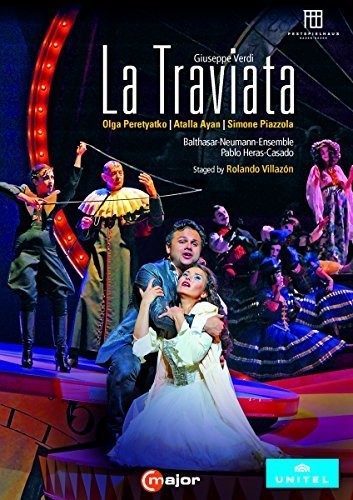
-
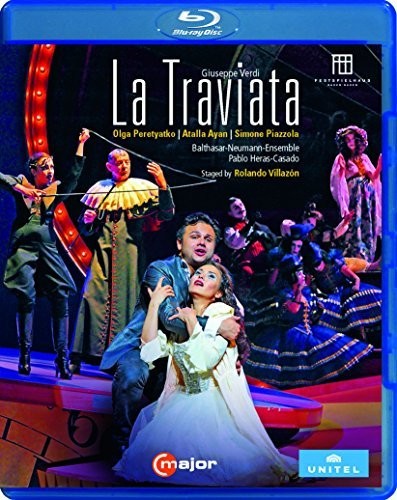
-
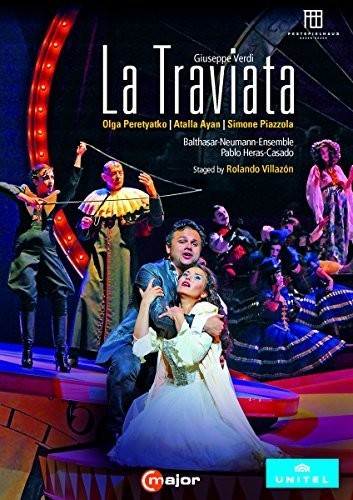 {# optional: put hover video/second image here positioned absolute; inset:0 #}
On SaleC Major Entertainment
{# optional: put hover video/second image here positioned absolute; inset:0 #}
On SaleC Major EntertainmentVerdi: La Traviata / Heras-Casado, Peretyatko, Ayan, Balthasar-Neumann-Ensemble
Also available on Blu-ray Star tenor and director Rolando Villazón’s staging of La Traviata at the Festspielhaus in Baden Baden is “visually...
November 18, 2016$35.99$17.99 -
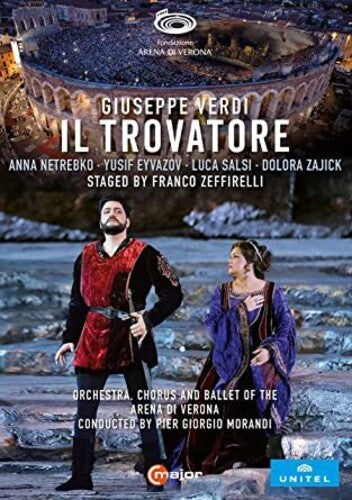
-
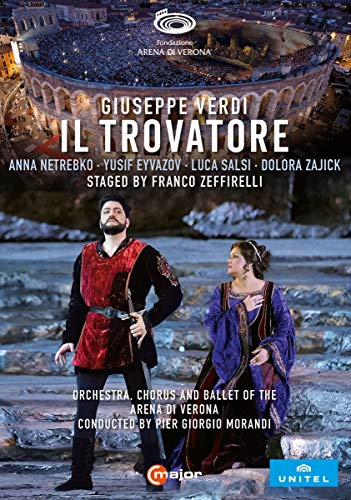
-
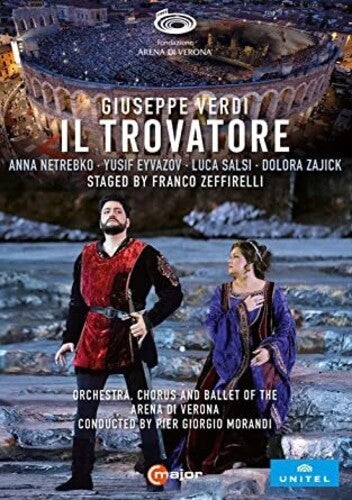 {# optional: put hover video/second image here positioned absolute; inset:0 #}
On SaleC Major Entertainment
{# optional: put hover video/second image here positioned absolute; inset:0 #}
On SaleC Major EntertainmentVerdi: Il Trovatore / Morandi, Arena di Verona
Also available on Blu-ray It's an event that draws many thousands of music lovers to one of the most beautiful cities in...
May 22, 2020$51.99$38.99 -
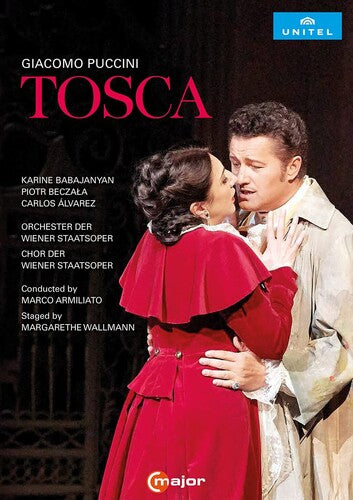
-
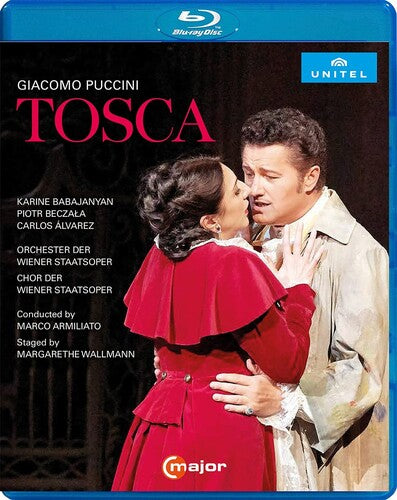
-
![Puccini: Tosca / Vienna State Opera [DVD]](//arkivmusic.com/cdn/shop/files/4007943-2744806.jpg?v=1749388249&width=800) {# optional: put hover video/second image here positioned absolute; inset:0 #}
On SaleC Major Entertainment
{# optional: put hover video/second image here positioned absolute; inset:0 #}
On SaleC Major EntertainmentPuccini: Tosca / Vienna State Opera [DVD]
Giacomo Puccini’s Tosca is one of the most dramatic thrillers in the history of opera. In the revived, legendary historic staging of...
October 22, 2021$35.99$17.99 -
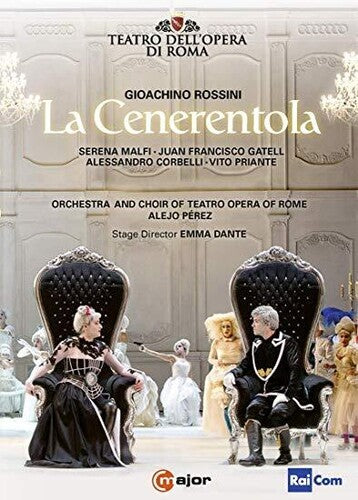
-
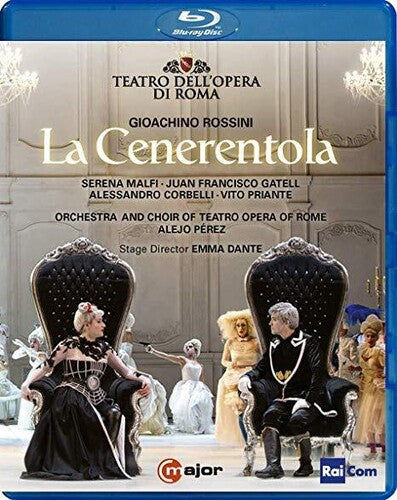
-
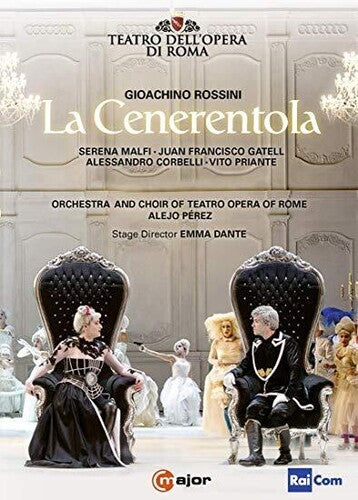 {# optional: put hover video/second image here positioned absolute; inset:0 #}
On SaleC Major Entertainment
{# optional: put hover video/second image here positioned absolute; inset:0 #}
On SaleC Major EntertainmentRossini: La Cenerontola / Perez, Teatro Opera of Rome
Also available on Blu-ray Rossini’s second masterpiece La Cenerentola premiered at the Teatro Valle in Rome on the 25th of January 1817,...
March 20, 2020$45.99$22.98 -
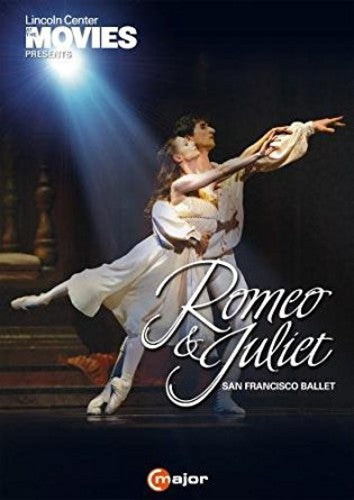
-
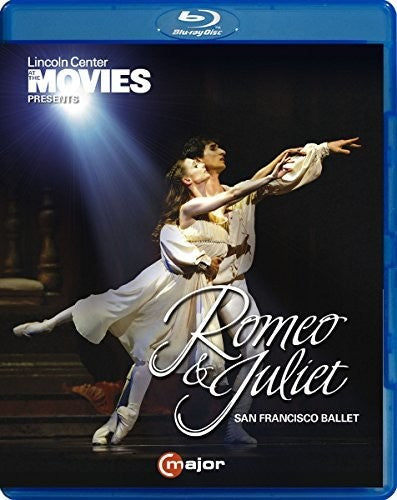
-
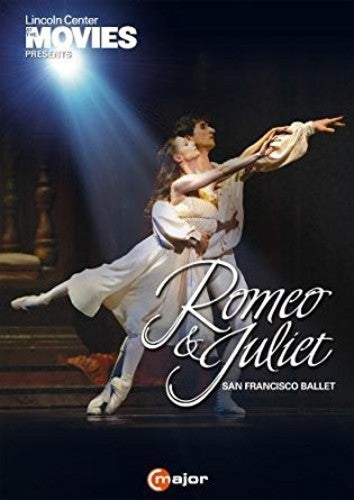 {# optional: put hover video/second image here positioned absolute; inset:0 #}
On SaleC Major Entertainment
{# optional: put hover video/second image here positioned absolute; inset:0 #}
On SaleC Major EntertainmentProkofiev: Romeo & Juliet / West, San Francisco Ballet Orchestra
From grand spectacles to poignant close-ups, experience Helgi Tomasson's bravura interpretation of Shakespeare's Romeo & Juliet like you've never seen it before....
April 28, 2017$32.99$22.98 -
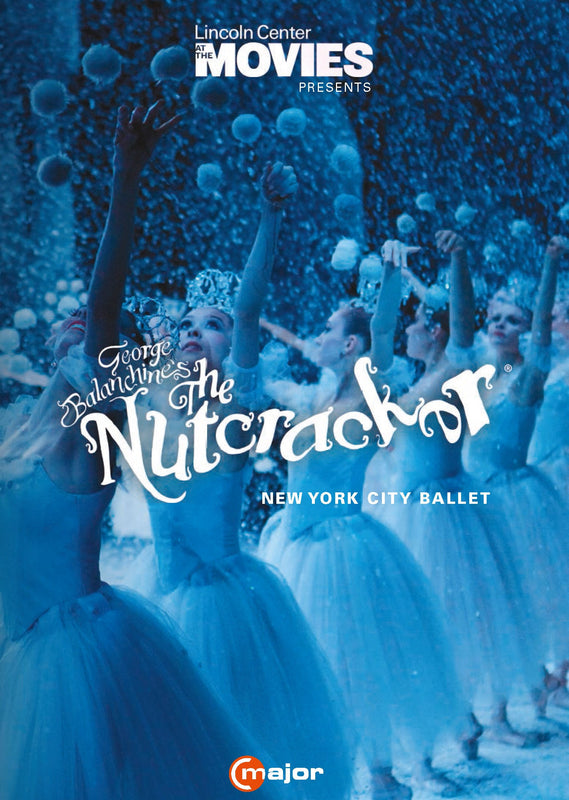
-
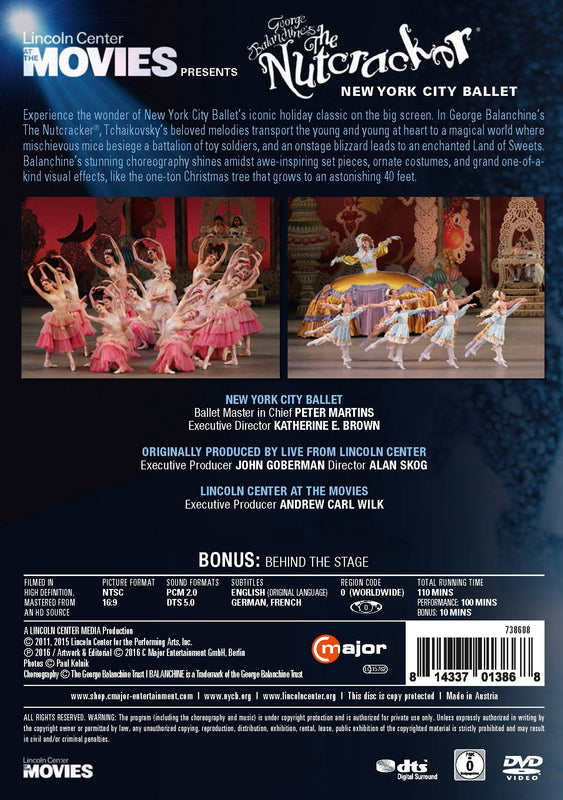
-
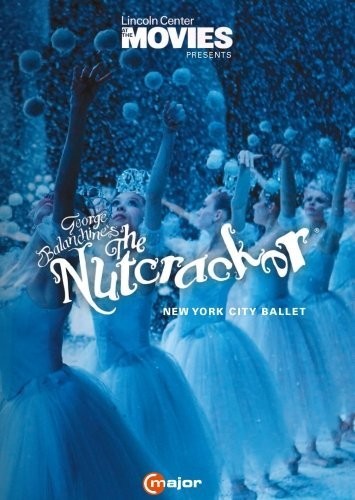
-
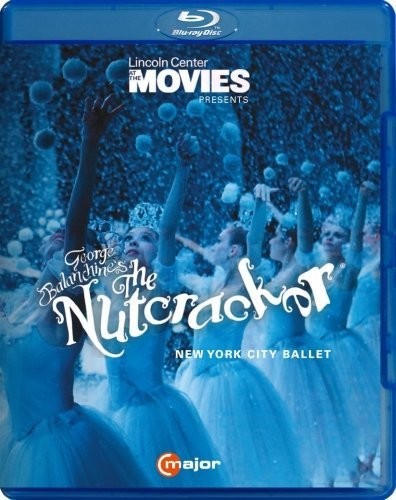
-
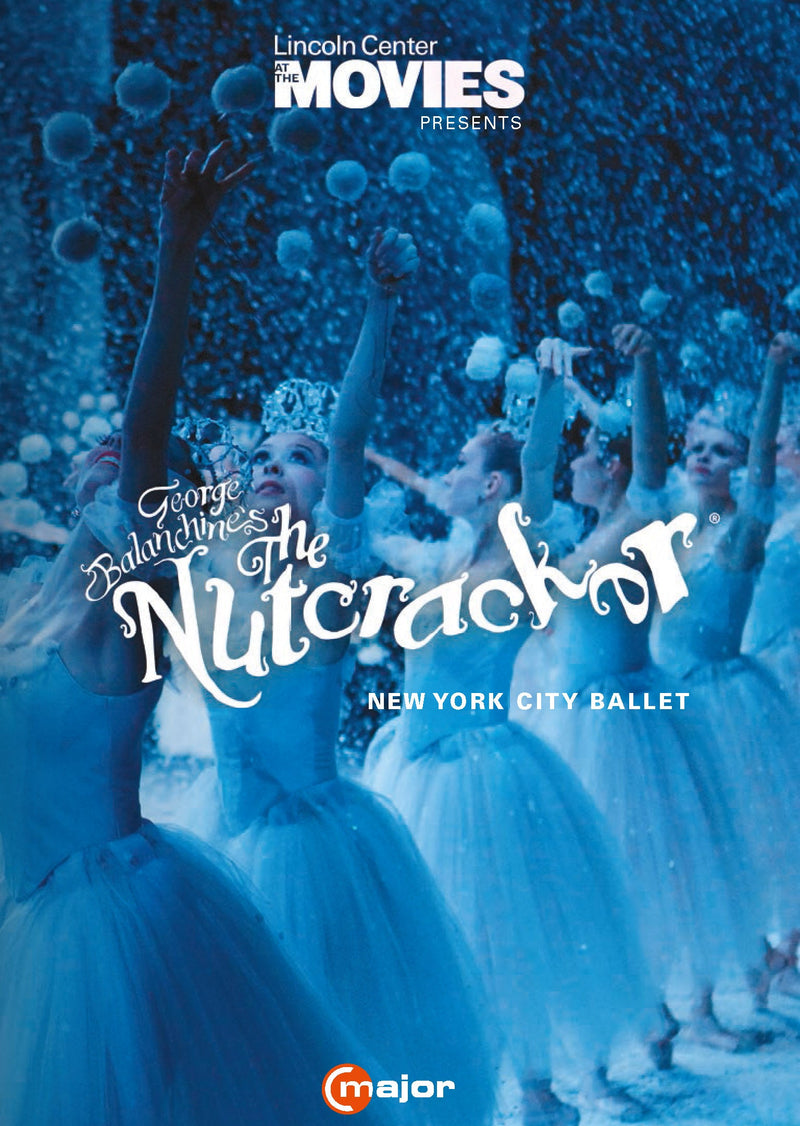 {# optional: put hover video/second image here positioned absolute; inset:0 #}
On SaleC Major Entertainment
{# optional: put hover video/second image here positioned absolute; inset:0 #}
On SaleC Major EntertainmentTchaikovsky: The Nutcracker / New York City Ballet
Experience the wonder of New York City Ballet’s iconic holiday classic on the big screen. In George Balanchine’s The Nutcracker, Tchaikovsky’s beloved...
November 18, 2016$32.99$24.99
Tutto Verdi: The Complete Operas / Various [Blu-ray]
Tutto Verdi- this edition sets standards by which all similar projects will be judged. It includes all twenty-six operas by the greatest Italian stage composer, together with his immortal Requiem, all of them in definitive performances. “This is how Tutto Verdi should be played.” (Frankfurter Allgemeine Zeitung) As a bonus, this impressive set also includes ten minute introductions to each opera as well as the documentary “Verdi’s Backyard,” and a 280 page booklet detailing each performance. The Orchestra e Coro del Teatro Regio di Parma shines in each of these productions, as do the world-renowned soloists that include Daniela Dessi, Marcelo Alvarez, Leo Nucci, Fiorenza Cedolins, Irinia Lungu, and many more. Subtitles are available in Italian, English, German, French, Spanish, Chinese, Korean, and Japanese.
Tutto Verdi - The Complete Operas
On the occasion of the 200th birthday of Giuseppe Verdi, the Teatro Regio di Parma and Unitel ClassiCa have joined forces to realize a truly unique project. Up to the Verdi anniversary year 2013, all of the composer’s 26 operas, as well as the Requiem – which is closely related to the operas – will be performed and audiovisually recorded in and around Parma. For the first time ever, and on time for the composer’s anniversary, Verdi’s operatic oeuvre, which comprises the labor of more than 50 years, will be available in high definition and surround sound.
Giuseppe Verdi was born in the little village of Le Roncole in the vicinity of Parma and – even though he celebrated his greatest triumphs in Milan, Venice, Naples, and other cities – spent the longest period of his life in seclusion close to Parma, until his death in Milan in 1901. Today, the region of Parma honors its one-time fellow citizen with the internationally acclaimed Verdi Festival organized by the Teatro Regio di Parma. Every year, Verdi’s masterworks are performed in the historical theaters of Parma and neighboring Busseto over 28 days in the fall. Raising these productions to the level of highly coveted events is the participation of world stars of bel canto such as Leo Nucci, Marcelo Álvarez, Renato Bruson, and Daniela Dessì, and conductors such as Yuri Temirkanov and Gianluigi Gelmetti.
The Teatro Regio was opened during Verdi’s lifetime, in 1829, as the Nuovo Teatro Ducale. It is regarded as one of the most important theaters in italy. Its audiences, in particular, enjoy a very special reputation for being one of the most critical in the world. Many singers report about the fears that gripped them while on the stage, and others about moments of bliss when they were acclaimed there. It is said that tenors who fail on the stage of the Regio are punished even by the porters of the hotels, who refuse to carry their luggage.
A production of Unitel in cooperation with Fondazione Teatro Regio di Parma.
---------
“The Tutto Verdi series, in its goal of being complete, makes it possible to not only hear but see performances of works one seldom encounters outside of Parma, such as Oberto; Alzira (in a 2012 concert version in Dobbiaco); Attila; I Masnadieri (in a performance from the Teatro San Carlo in Naples); Il Corsaro; and La Battaglia di Legnano.
One does not have to be a Verdi completist like me to find a lot to enjoy in Tutto Verdi. The rarities are worth knowing to expand your sense of the composer’s output. The seven operas with Nucci are fascinating on so many levels, not the least of which is that his younger colleagues respond to his work not by being in awe but by allowing themselves to dig deeper and bring their performances to a higher plain than they imagined they were capable of. What would Peppino say?” – Fred Plotkin, WQXR
Review of blu-ray version:
VERDI TUTTO VERDI - The Complete Operas • Various performers • C MAJOR 721904 (27 Blu-ray discs: 64:47:00)
To mark the bicentenary of the birth of Giuseppe Verdi—indisputably (with absolutely no apologies to champions of Richard Wagner) the greatest opera composer in history—C Major/Unitel Classics has issued this set of the complete operas of Verdi, plus the Manzoni Requiem, in a single set of 27 Blu-ray discs. Between this and the 75-CD set on Decca of the complete works of Verdi issued earlier this year, lovers of the Italian maestro now have two impressive, if decidedly flawed (in both cases), cornucopias of musical riches available to them.
First, the logistics. This set (the deluxe edition—there is a less expensive one, with the DVDs in standard plastic cases and no book) comes in an LP-sized heavy white cardboard outer slipcase, which holds an inner black-colored heavy cardboard album. The inner album holds the Blu-ray discs in cut-out slots in heavy cardboard pages, with four discs per page; each slot thoughtfully has a finger-hole cut at the top of it to make it easy to remove the discs with minimal risk of ripping the cardboard. On the back sides of those pages are printed the titles, casts, and small color shots of the four operas on the next facing cardboard page. The album also has a separate pocket that contains a 120-page book (also LP-sized), printed on heavy glossy paper. The book opens with an introduction by renowned Verdi scholar Philip Gossett of the University of Chicago, who is overseeing the monumental project of creating and editing the complete critical edition of Verdi’s operas, and an essay, “The Verdi Myth,” by the distinguished British musicologist of 19th-century opera, Roger Parker. After that follow four-page listings for each opera, all having the same format: a large photo from the live production; logistical information (the title and librettist of the opera, conductor, cast members and corresponding characters, chorus and orchestra, and date and location for that production); a table of contents for the disc, with track titles and their individual timings; and a brief plot synopsis. The introduction, essay, plot synopses, and names of the characters are provided in English, French, German, and Italian. The final two pages of the book provide, in minuscule type, a plethora of background technical information and credits, even down to the various computer programs used to prepare the subtitles in various languages. The layout is generally excellent; I only wish that it also contained the complete timings for each opera and an index of the performers. There is one notable typographical error: an entry for the conductor (Yuri Temirkanov) is missing from the cast list for the Requiem.
As for the discs themselves, each opera comes with an introduction, always lasting about 10:40, that sets the opera in its historical context and provides a synopsis of the plot accompanied by snippets from the performance. Each introduction concludes with rankings of how frequently that particular opera is performed with respect to both Verdi’s other operas and the operatic repertoire as a whole. Absolutely no information is provided as to how these figures were derived (e.g., how many opera houses were surveyed, and for how long a time period), and so they strike me as decidedly suspect. Also, while the introductions are generally quite good, the narrator has a few distracting ticks; e.g., “Desdemona” is given the English pronunciation of the Shakespeare character rather than the Italian one of Verdi’s heroine, and “recitative” is oddly sounded out as “re-cite-tah-teeve” instead of “reh-chih-tah-teeve.” There are also trailers advertising several other operas in the series. Subtitles are available in English, French, German, Spanish, Chinese, Japanese, and Korean. For audio settings, there is a choice between PCM Stereo and DTS-HD Master Audio 5.1. Quite oddly, while successive discs in the set carry catalog numbers that incrementally increase by 200 (720104, 720304, etc.), this complete set is assigned a catalog number that places it between Attila and Macbeth , rather than at the beginning or end of the entire series.
Now, for the performances themselves. My discussions of the merits and demerits of each performance will (with a couple of exceptions) be relatively brief, for two reasons. First, this review must be kept within manageable bounds of length for this magazine. Second, virtually all of the discs have been released separately, with more lengthy individual reviews of those having already appeared in Fanfare at the hands of my colleagues (mostly Bill White, who reviewed 22 out of 27 items). I will cite these in the course of my own discussions, opening each individual review with a reference to the specific critic and the issue in which his review appeared. In citing alternative recordings, I will confine myself to other alternatives on DVD except in cases where those are unsatisfactory or a greatly superior version exists on CD.
By way of prologue, some comments that apply to all or most of the productions in this set. In his introduction, Gossett notes: “Parma has a reputation as one of the most conservative opera houses in Italy, so by and large the operas are seen in a fashion the composer himself would have recognized.” That is true only up to a point. It is true more of the costumes than of the sets, with many of the latter being far more abstract or spartan than typically would have been the norm even in smaller regional opera houses of Verdi’s time. Thankfully, there are only three major and typically repellant invasions of Regietheater into the proceedings (in Macbeth, I masnadieri, and La forza ). I will only remark upon the sets and costumes in particularly noteworthy instances.
As for the music, several of the performances utilize the recent new critical editions of Verdi’s scores from the project headed by Gossett. (So far, 13 volumes out of a projected 33, plus the Requiem , have been issued over the last 20 years, with four more currently in preparation; see humanities.uchicago.edu/orgs/ciao/Introductory/Vavail.html#operas.) That does not guarantee an uncut performance, however; cabalettas are often truncated, and in I vespri siciliani the entire ballet in act 3 is omitted. One can only term this a major opportunity missed.
Furthermore, the claim that this set embraces the “complete” operas of Verdi is an outright misstatement. The most significant omissions are Jérusalem , Verdi’s 1847 French adaptation of I Lombardi from 1843, and Aroldo , his radical reworking in 1857 of Stiffelio from 1850. Both contain enough new music (in the case of Aroldo , an entirely new last act) that they constitute entirely separate works from their progenitors. To that I would also add the original 1857 version of Simon Boccanegra , which in addition to the new act 2 Council Scene had much of its score drastically rewritten. To my mind, the absence of these three items belies the claim of any Verdi opera series that claims to be complete. Of lesser import are the omissions of the original 1847 version of Macbeth and original 1862 version of La forza del destino , and the original French versions of Les vêpres siciliennes and Don Carlos that are presented here as I vespri siciliani and Don Carlo . (There are also the exceedingly vexed textual issues surrounding the numerous different versions of Don Carlos/Don Carlo; the performance offered here is the five-act Italian version of the Fontainbleau scene added to the four-act Italian revision of 1884.) If one wanted to be pedantic, one could also cite the omissions of the original Italian adaptation of Les vêpres siciliennes as Giovanna di Guzman, and of the later French adaptations of Il trovatore as Le trouvère and of La forza del destino as La force du destin.
Regarding the performances, with two exceptions ( I masnadieri from the San Carlo Opera in Naples and Otello from the Salzburg Festival), all of these derive from provincial Italian opera houses, and not the major theaters in Venice, Milan, Rome, or Naples. In fact, all but five— Alzira, I masnadieri, La battaglia di Legnano, Don Carlo, and Otello —are staged in Parma, Verdi’s home city. Of the Parma presentations, two ( Oberto and Attila ) are staged at the smaller opera house in the suburb of Busseto, with the Requiem being performed at the Teatro Farnese and all the others being given in the city’s main theater, the Teatro Regio. One opera, Alzira , is (regrettably) given in a concert performance instead of a staged production.
Not surprisingly, given their provincial provenance, the performances vary widely in quality from quite good to excruciatingly awful. With a few exceptions, the vocal casts variously consist of young singers working their way up the operatic career ladder, over-the-hill veterans on their way back down the same, and “house” singers whose careers are established primarily at that theater. Since most of the productions are staged in Parma, several “house” singers appear for good or ill in multiple productions. Likewise, with occasional exceptions the conductors are not figures of international stature, though most prove themselves to be quite capable. Unless otherwise stated, assume in all of the reviews below that the conductor leads his forces competently, and that the orchestra and chorus perform creditably, albeit at the level of skill one would expect from a regional theater rather than world-class ensembles. Finally, while I did not have the regular DVD versions available for comparison, I can say that these feature the razor-sharp resolution of detail common to modern Blu-ray issues and fine recorded sound.
VERDI Oberto • Antonello Allemandi, cond; Francesca Sassu ( Leonora ); Mariana Pentcheva ( Cuniza ); Fabio Sartori ( Riccardo ); Giovanni Battista Parodi ( Oberto ); Parma Royal Theater Ch & O • C MAJOR 720104 (Blu-ray: 2:04:39) Live: Busseto 10/16 & 23/2007
(Bill White 36:4) With few exceptions, I almost always find myself in agreement with Bill White on the merits and demerits of various opera recordings, and I have little to add here to his excellent review. We are largely in accord on the overall fine cast of singers, with top honors going to soprano Sassu and tenor Sartori. I find Parodi somewhat rough-hewn in style but effective, and have reservations about Pentcheva, who has a rather squally top with an unattractive spread in the vibrato, though (unlike her other performances in this set) her lower and middle registers are solid here. I would add that conductor Allemandi gives an excellent account of the score, which is far better and more interesting than its unwarranted poor reputation suggests. Unlike White, I did not find anything particularly distracting about the characters’ gestures or the use of a discrete tableau for each scene. If vocally not on the level of the two main studio recordings on CD—the 1992 Orfeo set with Ghena Dimitrova, R?ža Baldani, Carlo Bergonzi, and Rolando Panerai under Lamberto Gardelli, and the 1996 Decca version with Maria Guleghina, Violeta Urmana, Stuart Neill, and Samuel Ramey under Neville Marriner—it is quite enjoyable and much better than its only DVD rival, a 2007 Opus Arte issue with Evelyn Herlitzius, Marianne Cornetti, Carlo Ventre, and Ildar Abdrazakov under Yves Abel.
VERDI Un giorno di regno • Donato Renzetti, cond; Anna Caterina Antonacci ( Marchesa del Poggio ); Alessandra Marianelli ( Giuletta ); Guido Loconsolo ( Belfiore ); Ivan Magri ( Edoardo ); Andrea Porta ( Kelbar ); Paolo Bordogna ( La Rocca ); Parma Royal Theater Ch & O • C MAJOR 720304 (Blu-ray: 1:59:37) Live: Parma 1/31/2010
(Bill White 36:4) White placed this on his 2013 Want List. While I had a different choice from this series for mine (see Stiffelio below), I can well understand his enthusiasm, even if I don’t quite share it to the same degree. Again, I am mostly in agreement with his comments up and down the line, but with a few more reservations. Antonacci now has a slight beat in the top of her register, and Loconsolo is shy of a few top notes. On the other hand, tenor Ivan Magri is terrific, a world-class singer who ought to be gracing the stages of the Met, La Scala, and Covent Garden. Marianelli is effective once she gets her top register warmed up, and the two bassos are capable, with Bordogna being superior to Porta. I have not been able to see the competing DVD release on the Hardy label of this same production from its 1997 premiere, also featuring Antonacci along with Cecilia Gasdia, Cesare Catani, Paolo Coni, Alfonso Antoniozzi, Bruno Praticò, and Carlo Bosi, conducted by Maurizio Benini. On CD there is the fine 1973 Philips recording with Jessye Norman, Fiorenzo Cossotto, José Carreras, Riccardo Cassinelli, Ingvar Wixell, Vincente Sardinero, and Wladimiro Ganzarolli under Lamberto Gardelli.
VERDI Nabucco • Michele Mariotti, cond; Dimitra Theodossiou ( Abigaille ); Anna Maria Chiuri ( Fenena ); Bruno Ribeiro ( Ismene ); Leo Nucci ( Nabucco ); Riccardo Zanellato ( Zaccaria ); Parma Royal Theater Ch & O • C MAJOR 720504 (Blu-ray: 2:17:54) Live: Parma 10/12–14/2009
(Bill White 36:4) White gave this a very mixed review; my overall verdict is considerably more negative. I found the staging and costumes both to be a largely incoherent postmodernist mish-mash. White said of it: “It looks like Jewish on the cheap to go along with Babylon on the cheap, but all of it works well enough.” For me, it doesn’t work at all. A pair of rather ugly gray walls, ostensibly composed of rectangular stone blocks, is recycled for use into other productions in this series ( I Lombardi and La forza come immediately to mind). The singers are a mediocre to poor lot. Zanellato as Zaccaria is solid, albeit slightly diffuse in voice. The Ismene is painfully whiny, and the Fenena has a wobble in the top half of her voice, though she can do some nice softer singing. Of course, the major attention goes to the two principals; in this case that attention is especially warranted because soprano Dimitra Theodossiou and baritone Leo Nucci are the singers most frequently featured throughout this entire set, appearing respectively in five and seven leading roles (though this is the only time they appear together).
Regarding Theodossiou, back in 33:6 I wrote in a review of her performance in Donizetti’s Lucrezia Borgia as follows: “When she first appeared on records a decade ago, she possessed a promising dramatic voice, albeit with a slightly thin and unstable top. The top has now completely unraveled, leaving behind a squally, shrill, out-of-tune mess—who needs poisoned wine when you can slay people with simple screeching?” In retrospect that was unkind (a friend commented, “Remember that behind the voice is a real human being”), if nonetheless accurate. In her lower register she is passable if undistinguished, but her upper register is a wobbly mess. Unfortunately, she appears to be a major house favorite in Parma, which does not say much for the acumen of the audience.
As for Nucci, at age 68 he is a canny veteran, but that cannot compensate for the fact that his voice here is painfully dry and hollow, with a wobble whenever he pushes it for attempts at dramatic effect. As subsequent comments will make apparent, in a positive sense he is more uneven than Theodossiou, in that on the right day and in the right role he can still pull together a dramatically effective and vocally tolerable performance. Alas, this is neither that day nor role.
In the course of his review White also observed: “The Parma forces seem to do well enough in Verdi’s more obscure works, but they will have to step it up to be truly competitive in the more popular operas such as this one.” This remark has proved remarkably prescient, even prophetic, when applied to this set as a whole. As for alternatives on DVD—11 others besides this one, and I’ve watched at least portions of every one of them—a curious inverse relationship generally seems to exist between the quality of the staging and of the singing: the better the former, the worse the latter. There are two exceptions, both released by Kultur and featuring Ghena Dimitrova and Renato Bruson in the lead roles: the 1981 Arena di Verona performance conducted by Maurizio Arena, and the 1987 La Scala production led by Riccardo Muti. The La Scala performance is my first choice for any recording of Nabucco , excellent in every way. The one advantage of the Arena di Verona performance is that the two principals are in even fresher voice—Dimitrova is absolutely astounding, and also far less zaftig than she later became—and the huge outdoor staging is impressive for its scale. However, all the other elements—the supporting cast, conducting, costumes, and film and sound quality—are markedly inferior. There are two other, if somewhat lower-ranking, alternatives also worth considering. The Dynamic issue of a 2004 Genoa performance, with Susan Neves, Alberto Gazale, and conductor Riccardo Frizza, offers the gorgeously sung Abigaille of Neves and a solid supporting cast, but has decidedly drab sets and costumes. The DG release of the 2002 Met production, with Maria Guleghina, Juan Pons, and Samuel Ramey under James Levine, features a performance that manages to be effective despite some technically rough singing all around and the misjudged decision to clothe the characters in modern dress. The other versions are all seriously flawed, either in vocal casting or production values, and not deserving of even a first look.
VERDI I Lombardi alla prima crociata • Daniele Callegari, cond; Dimitra Theodossiou ( Giselda ); Francesco Meli ( Oronte ); Roberto De Biasio ( Arvino ); Michele Pertusi ( Pagano ); Parma Royal Theater Ch & O • C MAJOR 720704 (Blu-ray: 2:22:53) Live: Parma 1/15 & 21/2009
(Henry Fogel 36:4) Fogel gave this a very positive review and prefers it to the one previous version on DVD, a 1984 La Scala production on Kultur with Ghena Dimitrova, José Carreras, Carlo Bini, and Silvano Carroli under Gianandrea Gavazzeni. We have one pronounced disagreement here: our opposing evaluations of the respective lead sopranos. Fogel has reviewed several of Dimitrova’s other recordings in these pages, and makes no secret of a dislike for her, while here he praises Theodossiou as the “one singer who stands out in an excellent cast....[She] floats glorious pianissimi, soars over the entire ensemble when required, sculpts long phrases naturally, and is deeply inside the character....This is a truly triumphant performance, and marks the arrival of a major Verdi soprano for our time.” I, by contrast, consider Dimitrova to be a magnificent and woefully under-recorded major dramatic soprano, whereas Theodossiou—well, I just had my say about her a couple of paragraphs above in Nabucco . Actually, here she is in considerably better form than her usual wont and is actually vocally tolerable and dramatically effective, though she doesn’t bowl me over. Meli has some strain in his upper register, but is steady and ardent. De Biasio is somewhat white-voiced, but is likewise effective; Pertusi is vocally somewhat diffuse and has dry top notes, but has a potent presence. Among the comprimario singers, Roberto Tagliavini deserves mention by name for a fine performance as Pirro. While the staging and costumes are mostly traditional, there are a couple of odd deviations: the Jews in act 3 appear in modern dress, and among the projected backdrops Picasso’s Guernica puts in an appearance in a rather heavy-handed touch of modern political relevance. Overall this is preferable to the1984 La Scala version, where Carreras has already begun his downhill vocal slide and the rest of the cast (particularly Carlo Bini as Arvino) is weaker than here. However, both are greatly outclassed by two alternatives on CD: a live 1969 performance from Rome issued on various labels (currently available on Opera d’Oro) with Renata Scotto, Luciano Pavarotti, Umberto Grilli, and Ruggero Raimondi under Gianandrea Gavazzeni, and the 1971 Philips studio version (now reissued on Decca) with Christina Deutekom, Plácido Domingo, Jerome lo Monaco, and Raimondi under Lamberto Gardelli.
VERDI Ernani • Antonello Allemandi, cond; Susan Neves ( Leonora ); Marco Berti ( Ernani ); Giacomo Prestia ( de Silva ); Carlo Guelfi ( Don Carlo ); Parma Royal Theater Ch & O • C MAJOR 720904 (Blu-ray: 2:10:23) Live: Parma 5/3–19/2005
(Not reviewed) Somehow this DVD eluded being reviewed in these pages, but in 29:6 James Miller reviewed a previous CD release of this performance on the Dynamic label; I agree with all of his comments except for those on Prestia as de Silva, who I find to have a suitably sepulchral voice and imposing presence, albeit with a rather diffuse upper register and unsteady sustained notes. Susan Neves is that present-day rarity, a genuine Verdi soprano in voice, style, and technique; if a few of her high notes are indeed a touch shrill, she more than makes up for it with a genuine and great trill where prescribed. As Ernani, Berti is somewhat beefy in tone and throaty in vocal production; he labors through his ornamental grupettos and has a tendency to lurch into his high notes. That said, he still has the right basic vocal equipment and, in an era parched for even passable Verdi tenors, he would be a welcome addition to the roster of almost any opera house—he is vastly superior to the crudely gauche and incompetent Marcello Giordani that the Met inexplicably keeps casting in one production after another. As Don Carlo, Guelfi has a real Verdi baritone but flawed vocal production; he lacks beauty of timbre, has a slightly oscillating vibrato and throatiness, and some top notes are a bit hollow and not quite stable. Despite those criticisms, he manages to present an effective portrayal. The costumes and sets are thoroughly traditional; the latter, composed primarily of elongated scenic panels as backdrops, appear to have taken inspiration from the paintings of El Greco, a very sensible choice for this work. The choral work and conducting are solid though not outstanding. If no other version were available on DVD this would be a satisfying enough alternative, but it faces powerhouse competition from the Decca release of the 1983 Met production with Leona Mitchell, Luciano Pavarotti, Sherrill Milnes, and Raimondi under James Levine, and the Kultur video of the 1982 La Scala production with Mirella Freni, Domingo, Renato Bruson, and Nicolai Ghiaurov under Riccardo Muti. Looking at the casts on paper, I would have thought the Kultur video an easy favorite for me, but surprisingly it is the Met performance that is the superior choice, as everyone there is firing on all eight cylinders while their counterparts at La Scala are curiously off-form.
VERDI I due Foscari • Donato Renzetti, cond; Tatiana Serjan ( Lucrezia ); Roberto De Biasio ( Jacopo ); Leo Nucci ( Francesco ); Parma Royal Theater Ch & O • C MAJOR 721104 (Blu-ray: 1:56:25) Live: Parma 10/8 & 16/2009
(Bob Rose 36:4, Barry Brenesal 36:6) Both Rose (briefly) and Brenesal (at greater length) endorsed this as a fine performance, and I fully concur. Indeed, it is one of the best entries in this entire series, which makes me particularly happy, as I have a great fondness for this opera among Verdi’s early wo
Teatro alla Scala Ballets / Ballet Company and Orchestra of Teatro alla Scala [DVD]
| The present release showcases five outstanding ballets from the legendary Teatro alla Scala. First is Romeo and Juliet. The stars of this masterly performance are Roberto Bolle and Misty Copeland, together for the first time in this ballet. Next is The Sleeping Beauty which received fantastic reviews: “Timofej Andrijashenko had a great debut with the Désiré of Nureyev. Polina Semionova was an amazing Aurora” (Strata Gemmi) “A great production, a success thanks to a superlative and thrilling ballet company.” (LUUK) Don Quixote follows, and classical ballet stars Natalia Osipova (Bolshoi Ballet) and Leonid Sarafanov (Mariinsky Ballet) make this a breathtaking distinctive performance. Next is Le Corsaire, of which critics wrote: “The star is the ballet company, in dazzling form” (Il Giorno), “Impeccable” (Informadanza). And finally, The Lover’s Garden: “The creative genius of the choreographer Volpini leaves a strong mark on this new production, confirming the talent.“ (giornaledelladanza.com) |
Tango Under the Stars
Gustavo Dudamel and the Los Angeles Philharmonic accent the colors, rhythms and passion of music by leading composers from Argentina in this invigorationg evening at the Hollywood Bowl - Astor Piazzolla, the master of Nuevo Tanog, who's four tangos feature on stage the dance company Tango Buenos Aires, known worldwide as the most authentic and uncompromising representative of the tango, Alberto Ginastera, one of the most important 20th century classical composers of the Americas and Piazzolla's first teacher, and Lalo Schifrin, who, beside his concert music, is the composer of the famous scores of "Mission: Impossible" and "Dirty Harry". His "concerto for Guitar and Orchestra", a world premiere recording, is composed for Angel Romero, an iconic master of the classical guitar.
Strauss: Arabella / Fleming, Hampson, Thielemann
2014 marks a year of celebration recognizing the 150th birthday year of the German late-Romantic orchestral, operatic and lied master composer, Richard Strauss (1864-1949). Arabella (premiered 1933, Dresden) was the last of the half dozen Strauss works to feature a libretto by the great Austrian writer Hugo von Hofmannsthal. This production, from the most recent Salzburg Easter Festival is, after Capriccio, the second of three Richard Strauss operas C Major is releasing in honor of the composer’s birth, life and work. The star-laden cast includes soprano Renèe Fleming, baritone Thomas Hampson, Albert Dohmen (Covent Garden, Wiener Staatsoper, MET) and Gabriela Benacková (Wiener Staatsoper, Covent Garden). With Christian Thielemann and the Staatskapelle Dresden, “the music of Richard Strauss is in the best of hands.” (ORF) “Thielemann gets the best out of the cast...especially Renée Fleming with her “luxurious” soprano …” FAZ
Richard Strauss
ARABELLA
Graf Waldner - Albert Dohmen
Adelaide - Gabriela Be?a?ková
Arabella - Renée Fleming
Zdenka - Hanna-Elisabeth Müller
Mandryka - Thomas Hampson
Matteo - Daniel Behle
Sächsischer Staatsopernchor Dresden
(chorus master: Wolfram Tetzner)
Staatskapelle Dresden
Christian Thielemann, conductor
Florentine Klepper, stage director
Martina Segna, set designer
Anna Sofie Tuma, costume designer
Bernd Purkrabek, lighting designer
Volker Michl, choreographer
Recorded live at Salzburg Easter Festival, 2014
Picture format: NTSC 16:9
Sound format: PCM Stereo / DTS 5.0br> Region code: 0 (worldwide)
Subtitles: German, English, French, Spanish, Chinese, Korean, Japanese
Booklet notes: English, German, French
Running time: 178 mins
No. of DVDs: 1
Tutto Verdi Operas Vol 3, 1855-1893 [11-DVDs]
“The Tutto Verdi series, in its goal of being complete, makes it possible to not only hear but see performances of works one seldom encounters outside of Parma...One does not have to be a Verdi completist like me to find a lot to enjoy in Tutto Verdi. The rarities are worth knowing to expand your sense of the composer’s output. The seven operas with Nucci are fascinating on so many levels, not the least of which is that his younger colleagues respond to his work not by being in awe but by allowing themselves to dig deeper and bring their performances to a higher plain than they imagined they were capable of. What would Peppino say?” – Fred Plotkin, WQXR
---------
Giuseppe Verdi
TUTTO VERDI – The Operas, Vol. 3 (1855–1893)
(11-DVD Box Disc Set)
I Vespri Siciliani (Teatro Regio di Parma, 2010)
Simon Boccanegra (Teatro Regio di Parma, 2010)
Un Ballo in Maschera (Teatro Regio di Parma, 2011)
La Forza del Destino (Teatro Regio di Parma, 2011)
Don Carlo (Teatro Comunale di Modena, 2012)
Aida (Teatro Regio di Parma, 2012)
Otello (Salzburg Festival, 2008)
Falstaff (Teatro Regio di Parma, 2011)
Bonus:
- Introduction to each opera
Picture format: NTSC 16:9
Sound format: PCM Stereo / DTS 5.1
Region code: 0 (worldwide)
Subtitles: Italian, English, German, French, Spanish, Chinese, Korean, Japanese
Running time: 20 hours 41 mins (operas) + 1 hour 27 mins (bonus)
No. of DVDs: 11 (DVD 9)
The Original Three Tenors - In Concert, Rome 1990 / Carreras, Domingo, Pavarotti, Mehta [Blu-ray]
This very special release includes the legendary concert of the Original Three Tenors - José Carreras, Plácido Domingo and Luciano Pavarotti, conducted by Zubin Mehta at the Terme di Caracalla, Rome 1990 on the eve of the Football World Cup in Italy, watched by 1.6 billion spectators worldwide. For the first time available on Blu-ray, digitally remastered! This edition includes the new documentary The Three Tenors - From Caracalla to the World featuring recent interviews with José Carreras, Plácido Domingo, Zubin Mehta, Pavarotti‘s widow Nicoletta Mantovani, Lalo Shifrin, Brian Large, Mario Dradi, Paul Potts, Sir Bryn Terfel, Norman Lebrecht, Didier de Cottignies and many more. Previously unpublished backstage material shows the tenors unadorned and offers a fascinating insight into what takes place beyond the spotlight in Rome, 1990 and the sequel in Los Angeles, 1994. The film takes a completely new look at the concert legends. For the first time, they talk about José Carreras‘ struggles with leukemia, their rivalries and friendships, their spectacular contract poker and life as an opera star.
Stravinsky in Hollywood
Stravinsky in Hollywood, a film by Michael Capalbo, tells the story of an "old school" European artist knocking heads with the brash New World. The documentary uses a combination of existing archival footage (some never before seen), interviews with Stravinsky and his assistant Robert Craft, and premieres several big studio film scenes of the 40s with music Stravinsky wrote for them.
The Bach Project: Cello Suites / Yo-Yo Ma
In 2018, Yo-Yo Ma began a two-year journey, setting out to perform Johann Sebastian Bach’s six suites for solo cello in one sitting, across 36 locations on 6 continents. For Yo-Yo, Bach’s 300-hundred-year-old music is one extraordinary example of how culture connects us and can help us to imagine and build a better future. In an unforgettable experience the 19 times Grammy ® Award winner and internationally acclaimed cellist performed the Cello Suites at the overwhelming Odeon of Herodes Atticus in Athens. Yo-Yo Ma says: “These suites are so meaningful. They’re not only companions and friends, but they’ve also been reference points in my life.” “Soft sounds around me suggested that others were caught up in similarly strong emotions. How Ma has this effect on people is a mystery: I suspect it has to do with the warmth he brings to music that is fundamentally beyond comprehension. He makes the godlike human.” (Alex Ross, The New Yorker)
-----
REVIEWS:
He doesn’t ‘ham-up’ his Bach, but there is more spontaneity here than I’ve heard from Ma before in his studio recordings, and playfulness and profundity alike are communicated with more directness and a feel of risk which is quite bracing. Every recording is a captured moment in time, and this is a unique document of a consummate artist performing the greatest of music composed for his instrument. If you are a fan of Yo-Yo Ma and/or of Bach’s Six Suites then you will want this.
– MusicWeb International
Cellist Yo-Yo Ma brings a lifetime of experience and sensitivity to the works, maintaining their intimacy even within this vast arena, and not a note is out of place. If you don’t know the suites well just listen to the third which is so full of life and joy. A recording to treasure.
– Lark Reviews (Dr. Brian Hick
Verdi: La Traviata / Heras-Casado, Peretyatko, Ayan, Balthasar-Neumann-Ensemble
Star tenor and director Rolando Villazón’s staging of La Traviata at the Festspielhaus in Baden Baden is “visually spectacular” (The Huffington Post) and made for “an enthusiastic reception for the premiere” (Stuttgarter Zeitung)! Villazón “proves again his excellent narrating skills on stage” (WDR Klassik). “The setting and opulence of the stage captivates the spectator, as do the stylized costumes designed by Thibault Vancraenenbroeck for circus artists” (Stuttgarter Zeitung). Olga Peretyatko as Violetta delivers “a fantastic portrait of the title role wavering between adolescent joie de vivre, mature insight and anguish” (Stuttgarter Zeitung). Her partner is the tenor Atalla Ayan as the jealous Alfredo, who delivers a “beguiling interpretation with a dark, warm timbre and rich top notes” (Stuttgarter Zeitung). Simone Piazzolla as Alfredo’s strict father Giorgio Germont adds fine vocal lines to provide a strong sense of “Italianità” on stage (Neue Zürcher Zeitung). Conductor is Pablo Heras-Casado, “a great hope of a new generation of conductors” (WDR Klassik).
Verdi: Il Trovatore / Morandi, Arena di Verona
It's an event that draws many thousands of music lovers to one of the most beautiful cities in the world every summer: the opera season at the ancient Arena di Verona. The 2,000-year-old roman amphitheater with its gigantic stage dimensions is one of the largest and best preserved Roman construction of its kind, and with over 22,000 seats it is undoubtedly one of the most spectacular open-air venues of the world! The revered master of opera Franco Zeffirelli, who died shortly before the premiere of Il Trovatore, created a legendary scenery with groups of giant sized armored knights, a fortress turning into a luminous cathedral, an enormous choir, horses, breathtaking fights: “his perhaps best arena production” (Opernglas). It brings Anna Netrebko to the Arena of Verona where she is giving her much-anticipated debut in one of Giuseppe Verdi’s most popular operas. Next to Anna Netrebko as Leonora perform Verdi accomplished baritone Luca Salsi as Count di Luna and Yusif Eyvazov returns to the Arena as his powerful-voiced opponent Manrico. MET star Dolora Zajick as Azucena and young rising Italian bass Riccardo Fassi as Ferrando join the prestigious ensemble. “Zeffirelli gives to the arena what it merits: a colourful, multifaceted staging in which impressive mass scenes alternate with intimate moments [...]“ (Der Neue Merker) “Unforgettable” (Verona Settegiorni)
Puccini: Tosca / Vienna State Opera [DVD]
Giacomo Puccini’s Tosca is one of the most dramatic thrillers in the history of opera. In the revived, legendary historic staging of Margarethe Wallmann, Piotr Beczala (“one of the extraordinary singers of our time”, Der Standard) celebrated his acclaimed role debut as Cavaradossi and is “overwhelming” (Wiener Zeitung). At his side is Karine Babajanyan as Primadonna Floria Tosca, making her house debut at the Vienna State Opera and Carlos Álvarez, whose “Scarpia is an ambassador of evil like no other.” (Wiener Zeitung) - a performance of unique and lasting quality!
Rossini: La Cenerontola / Perez, Teatro Opera of Rome
Rossini’s second masterpiece La Cenerentola premiered at the Teatro Valle in Rome on the 25th of January 1817, less than a year after the first performance of his The Barber of Seville and it´s pure, perfect Rossini. In this production, a set-up made to celebrate 200 years Rossini in Rome, Emma Dante´s “rousing Cinderella” (Corriere della Sera) “succeeds in impressing her own contemporary vision on a classic masterpiece, in perfect symbiosis with the spirit of Rossini.” (Opera Now) “Alejo Pérez deserves the credit for an excellent ensemble and a dazzling rhythmic rendering of the Rossinian score.” (La Nazione – Il Resto del Carlino – Il Giorno)
Prokofiev: Romeo & Juliet / West, San Francisco Ballet Orchestra
From grand spectacles to poignant close-ups, experience Helgi Tomasson's bravura interpretation of Shakespeare's Romeo & Juliet like you've never seen it before. With passionate choreography, spine-tingling swordsmansip, and a celebrated score by Sergei Prokofiev, San Francisco Ballet's passionate retelling of the Bard's greatest tragedy has packed houses around the world. Romeo & Juliet is one of the Company's most popular and widely toured ballets and has been seen by more than 200,000 people since it premiered in 1994. Choreographed by Helgi Tomasson, with sets and costumes by Jens-Jacob Worsaae, this visually stunning production and the brilliant dancers of San Francisco Ballet bring this powerful and touching tragedy - and Renaissance-era Verona - vivdly to life. "Tomasson lifts Shakespeare's complex and familiar language off the gilded pages and translates it into lucid classical choreography that is visceral, fresh, and ultimately sublime" (Huffington Post).
Tchaikovsky: The Nutcracker / New York City Ballet
Experience the wonder of New York City Ballet’s iconic holiday classic on the big screen. In George Balanchine’s The Nutcracker, Tchaikovsky’s beloved melodies transport the young and young at heart to a magical world where mischievous mice besiege a battalion of toy soldiers, and an onstage blizzard leads to an enchanted Land of Sweets. Balanchine’s stunning choreography shines amidst awe-inspiring set pieces, ornate costumes, and grand one-of-a-kind visual effects, like the one-ton Christmas tree that grows to an astonishing 40 feet. NYCB’s beloved production has been performed in New York City every year since its premiere on February 2, 1954, and is seen live by more than 100,000 people annually.
DETAILS:
Format: Classical, Color, NTSC, Widescreen
Language: English
Region: All Regions
Aspect Ratio: 1.78:1
Run Time: 110 minutes
REVIEWS:
This New York City Ballet production has been revived annually for more than 60 years and it’s easy to see its appeal. Balanchine’s inventive choreography, high production standards and expert performances from both principals and the corps de ballet make this a recorded performance to treasure—and not just at Christmas.
-- MusicWeb International
In 1954, George Balanchine and the New York City Opera were chief among the pioneering groups that made The Nutcracker a holiday favorite now danced by every company in the land during December. The film released this year by the C Major label is the 2011 production and it’s a beauty from beginning to end. The party in the first act is festive, the transformation scene, with its tree that grows from 12 to 40 feet, is magical, as is the rest of the production up to the end which finds Marie and her prince transported to the stars in a reindeer pulled sleigh. The dancing is first rate throughout and the orchestra plays admirably well, led by maestra Clotilde Otranto, who chooses fairly brisk tempos throughout. These never seem rushed nor do they seem to pose any problems for the dancers. Overall this is a five star production with state of the arts video and audio reproduction. Not to be missed.
-- Rad's Reference Reviews




![Tutto Verdi: The Complete Operas / Various [Blu-ray]](http://arkivmusic.com/cdn/shop/files/3828558.jpg?v=1749389863&width=800) {# optional: put hover video/second image here positioned absolute; inset:0 #}
{# optional: put hover video/second image here positioned absolute; inset:0 #}


 {# optional: put hover video/second image here positioned absolute; inset:0 #}
{# optional: put hover video/second image here positioned absolute; inset:0 #}


![Teatro alla Scala Ballets / Ballet Company and Orchestra of Teatro alla Scala [DVD]](http://arkivmusic.com/cdn/shop/files/4018062-2764543.jpg?v=1760448499&width=800) {# optional: put hover video/second image here positioned absolute; inset:0 #}
{# optional: put hover video/second image here positioned absolute; inset:0 #}


 {# optional: put hover video/second image here positioned absolute; inset:0 #}
{# optional: put hover video/second image here positioned absolute; inset:0 #}


 {# optional: put hover video/second image here positioned absolute; inset:0 #}
{# optional: put hover video/second image here positioned absolute; inset:0 #}


![Tutto Verdi Operas Vol 3, 1855-1893 [11-DVDs]](http://arkivmusic.com/cdn/shop/files/2335711.jpg?v=1749259330&width=800) {# optional: put hover video/second image here positioned absolute; inset:0 #}
{# optional: put hover video/second image here positioned absolute; inset:0 #}


![The Original Three Tenors - In Concert, Rome 1990 / Carreras, Domingo, Pavarotti, Mehta [Blu-ray]](http://arkivmusic.com/cdn/shop/files/3995441-2731042.jpg?v=1761772264&width=800) {# optional: put hover video/second image here positioned absolute; inset:0 #}
{# optional: put hover video/second image here positioned absolute; inset:0 #}


 {# optional: put hover video/second image here positioned absolute; inset:0 #}
{# optional: put hover video/second image here positioned absolute; inset:0 #}


 {# optional: put hover video/second image here positioned absolute; inset:0 #}
{# optional: put hover video/second image here positioned absolute; inset:0 #}


 {# optional: put hover video/second image here positioned absolute; inset:0 #}
{# optional: put hover video/second image here positioned absolute; inset:0 #}


 {# optional: put hover video/second image here positioned absolute; inset:0 #}
{# optional: put hover video/second image here positioned absolute; inset:0 #}


![Puccini: Tosca / Vienna State Opera [DVD]](http://arkivmusic.com/cdn/shop/files/4007943-2744806.jpg?v=1749388249&width=800) {# optional: put hover video/second image here positioned absolute; inset:0 #}
{# optional: put hover video/second image here positioned absolute; inset:0 #}


 {# optional: put hover video/second image here positioned absolute; inset:0 #}
{# optional: put hover video/second image here positioned absolute; inset:0 #}


 {# optional: put hover video/second image here positioned absolute; inset:0 #}
{# optional: put hover video/second image here positioned absolute; inset:0 #}




 {# optional: put hover video/second image here positioned absolute; inset:0 #}
{# optional: put hover video/second image here positioned absolute; inset:0 #}